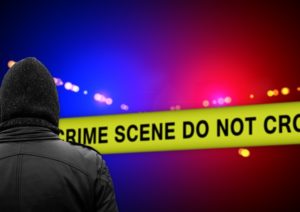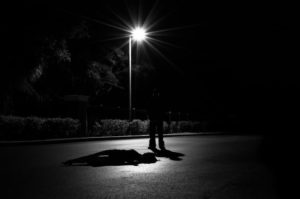Florida Police 10 Codes & Signals represent a system of numeric codes that are used to communicate information quickly and effectively in high-stress situations.
These codes are used to describe various situations, conditions, or instructions. They allow police officers to communicate with each other and with dispatchers without having to explain the details of the situation every time.
It’s a language that’s unique to law enforcement and emergency services, designed to be concise, clear, and quick to articulate.
Check out: police codes Illinois
What are 10 Codes?
10 codes, also known as ten signals, are brevity codes used in law enforcement to represent common phrases in voice communication.
They were initially developed in 1937 and have since been adopted by police and emergency response teams across the United States, including Florida.
Understanding Florida’s 10 Codes
While some 10 codes are fairly standard across different states, it’s important to note that their meanings can vary depending on the area or department. Here are some of the commonly used 10 codes in Florida:
10 CODES
10-1 Receiving Poorly
This code is used when the communication is not clear or is being received poorly.
10-2 Receiving Well
This code signifies that the communication is being received well and is clear.
10-3 Stop Transmitting
This code is used when an officer needs all others to stop transmitting immediately.
10-4 O.K.
“10-4” is perhaps one of the most commonly recognized codes, meaning “Acknowledged” or “Understood”.
10-5 Relay to ________
When this code is used, it means the officer is asking another officer or a dispatcher to relay information to a third party.
10-6 Busy
This code is used when an officer or dispatcher is busy and cannot handle additional tasks at the moment.
10-7 Out of Service
“10-7” means that a unit is out of service and not currently available for calls.
10-8 In Service
Conversely, “10-8” means that a unit is in service and available for calls.
10-9 Repeat
When this code is used, it means the officer didn’t understand the last transmission and needs it to be repeated.
10-10 Out of Service, Subject to call
This code means that although the unit is technically out of service, it can still be called upon if needed.
10-12 Visitor or With a Person
“10-12” signifies that an officer has a visitor or is with a person, implying that they may not be able to speak freely.
10-13 Weather and Road Conditions
This code is used to request information about the current weather and road conditions.
10-14 Escort
“10-14” is used when an officer is escorting or transporting someone.
10-14B Baker Act Transport
This code is specifically used when an officer is transporting someone under the Baker Act, a Florida law that allows for involuntary examination of an individual.
10-15 Prisoner in custody
This code signifies that an officer has a prisoner in custody.
10-16 Pick up Prisoner at ______
When this code is used, it means the officer is being directed to pick up a prisoner at a specific location.
10-17 Conduct Investigation
“10-17” is used when an officer is conducting an investigation.
10-19 Return to Station
This code instructs an officer to return to the station.
10-19A Fuel Vehicle
This code is used when an officer needs to fuel their vehicle.
10-19B Court
“10-19B” is used when an officer is going to court.
10-20 Location
This code is used to request an officer’s location or to give the location of an incident.
10-21 Phone Station
“10-21” instructs an officer to call the station by phone.
10-22 Disregard
This code is used to cancel a previous instruction or message.
10-23 Stand By
“10-23” is used when an officer is asked to stand by or wait.
10-24 Trouble, Send Help, Officer Down
This code signifies an emergency situation where an officer is in trouble and needs immediate assistance.
10-25 In Contact With
This code is used when an officer is in contact with a particular individual.
10-26 Message Received
“10-26” is used to acknowledge that a message has been received.
10-27 Drivers License Check
This code is used when an officer is checking a driver’s license.
10-28 Check Registration
“10-28” is used when an officer is checking a vehicle’s registration.
10-29 FCIC/NCIC Check
This code is used when an officer is requesting a check from the Florida Crime Information Center or the National Crime Information Center.
10-29P Person Check
This code is used when an officer is conducting a check on a specific person.
10-30 Against Rules
“10-30” is used when something is against rules or regulations.
10-31 In Pursuit
This code signifies that an officer is in pursuit of a suspect.
10-32 Breathalyzer Available/Operator
“10-32” is used when a breathalyzer is available or when an officer is qualified to operate one.
10-33 Emergency Message
This code is used to signal the transmission of an emergency message.
10-36 Correct Time
“10-36” is used to request the correct time.
10-37 Operator on Duty/Employee
This code is used to refer to the operator or employee currently on duty.
10-39 Message Delivered
“10-39” is used to confirm that a message has been delivered.
10-40 Case Number and Time
This code is used to request the case number and time.
10-42 Home/Residence
“10-42” is used to refer to an officer’s home or residence.
10-45 Phone at ______
This code is used when an officer will be at a specific phone number.
10-46 Urgent
“10-46” is used when a situation or message is urgent.
10-48 End of message, Did you copy?
This code is used at the end of a message to confirm if it was understood.
10-49 Wanted Person/Warrant
“10-49” is used when there is a wanted person or an active warrant.
10-49A Civil Papers Served
This code is used when civil papers have been successfully served.
10-50 Traffic Stop
“10-50” is used when an officer has made a traffic stop.
10-50F Attempted Traffic Stop with Flee
This code is used when an officer has attempted a traffic stop, but the vehicle has fled.
10-51 Enroute
“10-51” is used when an officer is enroute to a location.
10-52 E.T.A.
This code is used to request or provide an estimated time of arrival.
10-53 Coming to your Office
“10-53” is used when an officer is coming to another officer’s office.
10-54 Negative
“10-54” is used to signify a negative response or result.
10-56 Meet at _______
This code is used to arrange a meeting at a specific location.
10-60 Check Tower Lights
“10-60” is used to request a check of the tower lights.
10-62 Change to Channel __
This code is used to request a change to a specific channel.
10-65 Can you copy?
This code is used to ask if a message can be copied or understood.
10-66 Cancel
“10-66” is used to cancel a previous order or message.
10-68 Legal Advice
This code is used when an officer needs legal advice.
10-71 Send Ambulance
“10-71” is used when an ambulance is needed at a location.
10-75 Off Duty, In Dept Vehicle
This code is used when an officer is off duty, but in a department vehicle.
10-81 Send Wrecker
“10-81” is used when a wrecker is needed at a location.
10-88 What phone number can you be reached at?
This code is used to request a phone number where an officer can be reached.
10-96 Unable to Locate
“10-96” is used when an officer is unable to locate a person or place.
10-97 Arrived
“10-97” is used to signify that an officer has arrived at a location.
10-98 Completed Call
This code is used to signify that an officer has completed a call or assignment.
10-99 Unable to Read
“10-99” is used when an officer is unable to read a message or document.
CODES
Code 1 Routine Response
This code refers to a standard, non-emergency response. Officers are not required to use lights or sirens and can proceed normally.
Code 2 Expedite
When this code is used, officers are requested to expedite their response, but without the use of lights and sirens.
Code 3 Respond Lights and Siren
This code denotes an emergency situation. Officers are required to respond immediately with lights and sirens activated.
Code 4 Cancel Responding Units
This code is used when the situation has been resolved or assistance is no longer needed. It cancels all units that are responding.
SIGNALS
S0 Armed or Caution
This signal is used when a suspect is armed or when there’s a need for caution.
S1 DUI; Alcohol or Drugs
This signal indicates a Driving Under Influence situation due to alcohol or drugs.
S2 Intoxicated Person
This signal is used when an individual appears to be intoxicated.
S3 Hit and Run
Used when a hit and run incident has occurred.
S3F Hit and Run with Injuries
This signal indicates a hit and run incident where injuries have been reported.
S4 Vehicle Accident
This signal is used for standard vehicle accidents.
S4F Vehicle Accident with Injuries
This signal indicates a vehicle accident with reported injuries.
S5 Murder
This signal is used when a murder has been reported.
S6 Escaped Prisoner
Used when a prisoner has escaped.
S7 Dead Person
This signal is used when a deceased person is found.
S8 Missing Person
Used when a person is reported missing.
S8R Recovered Missing Person
This signal indicates that a previously reported missing person has been found.
S9 Stolen License Plate
This signal is used when a license plate has been reported stolen.
S9A Lost License Plate
Used when a license plate is reported lost.
S10 Stolen Vehicle
This signal is used for reporting a stolen vehicle.
S10IP Stolen Vehicle in Progress
This signal is used when a vehicle theft is currently in progress.
S10R Stolen Vehicle Recovery
Used when a previously reported stolen vehicle has been recovered.
S11 Abandoned Vehicle
This signal is used when a vehicle appears to be abandoned.
S11P Private Tow
Used when a private tow is required.
S12 Reckless Driver
This signal is used when a driver is reported to be driving recklessly.
S13 Suspicious Vehicle
This signal denotes a vehicle that appears suspicious.
S13A Suspicious Incident
Used when an incident or situation seems suspicious.
S13P Suspicious Person
This signal is used when a person appears suspicious.
S13X Suspicious Package
Used when a package or object appears suspicious.
S14 Information
This signal is used for general information sharing.
S14I Clermont Intelligence Report
This signal is used specifically by the Clermont Police Department for intelligence reporting.
S15 Special Detail
This signal is used when officers are assigned to a special detail or task that does not fall under regular duties.
S15M Special Detail: Marine
This code implies a special detail related to marine activities or incidents.
S15R Special Detail: Rainbow
This code is used when the special detail involves the LGBTQ+ community, often used during pride parades or other related events.
S16 Road Obstruction
This signal is used when there’s an obstruction in the road that needs to be cleared.
S17 Attempt to Locate
This code signifies an attempt to locate a person or an object.
S17A Welfare Check
Used when there’s a need to check on the welfare of a person, usually due to a request from a concerned party.
S20 Mentally Ill Person
This signal indicates a situation involving a person suffering from mental illness.
S20H Homicidal
Used when a mentally ill person is considered homicidal or a threat to others.
S21 Burglary
This code is used for general burglary situations.
S21A Burglary of Business
Used when a burglary has occurred at a business establishment.
S21A IP Burglary of Business in Progress
This code is used when a burglary at a business establishment is currently in progress.
S21B Burglary of Residence
Used when a burglary has occurred at a residence.
S21B IP Burglary of Residence in Progress
This code is used when a burglary at a residence is currently in progress.
S22 Verbal Disturbance
This signal is used for instances of verbal disturbance.
S22 IP Verbal Disturbance in Progress
Used when a verbal disturbance is currently happening.
S22 S0 Disturbance with a Weapon
This code is used when a disturbance involving a weapon is reported.
S23 Pedestrian/Hitchhiker
This signal is for situations involving pedestrians or hitchhikers.
S24 Robbery
This code is used for robbery situations.
S24A Purse Snatch
Used when a purse snatching incident is reported.
S24 S0 Armed Robbery
This code is used when an armed robbery is reported.
S25 Fire
This signal is used for general fire situations.
S25A Structure Fire
Used when a fire in a building or structure is reported.
S25B Brush Fire
This code is used when a brush fire is reported.
S25C Car Fire
Used when a fire involving a vehicle is reported.
S25F Multiple Dwelling Fire
This code is used when a fire involving multiple dwellings is reported.
S25H Commercial Fire
Used when a fire at a commercial property is reported.
S25X Explosives Problem
This code is used when a problem involving explosives is reported.
S26 Drowning
This signal is used when a drowning incident is reported.
S27 Trespasser
Used when a trespassing situation is reported.
S28 Riot
This code is used when a riot or large public disturbance is reported.
S28A Civil Disturbance
Used when a civil disturbance or unrest is reported.
S29 Reckless Boat
This signal is used when a boat is being operated recklessly.
S30 Bomb Threat
This code is used when a bomb threat is reported.
S31 Narcotics
Used when a narcotics-related situation is reported.
S32 Fraud
This code is used when a fraud situation is reported.
S32A Worthless Check
Used when a case of a worthless check or check fraud is reported.
S33 Assault and Battery
This code is used for assault and battery situations.
S33IP Assault and Battery in Progress
Used when an assault and battery situation is currently in progress.
S33 S0 Assault and Battery with a Weapon
This code is used when an assault and battery involving a weapon is reported.
S34 Rape
This signal is used when a rape is reported.
S34A Sex Offense
Used when a sex offense other than rape is reported.
S34B Verify Sex Predator
This code is used when there’s a need to verify the status or location of a registered sex predator.
S34BAV Sex Offender/Predator Address Verification
Used when verifying the address of a registered sex offender or predator.
S35 Car Burglary
This code is used when a car burglary is reported.
S36 Shooting
Used when a shooting incident is reported.
S36A Person Shot
This code is used when a person who has been shot is reported.
S36B Shooting in the Area
Used when gunfire or a shooting incident in the area is reported.
S36C Weapons Complaint
This code is used when a complaint involving weapons is reported.
S37 Suicide
Used when a suicide is reported.
S37A Suicide Attempt
This code is used when a suicide attempt is reported.
S37T Suicidal Thoughts
Used when a person expressing suicidal thoughts is reported.
S38 Gambling
This code is used when a gambling situation or illegal gambling activity is reported.
S39 Juvenile Complaint
Used when a complaint involving a juvenile is reported.
S39A Austistic Juvenile
This code is used when a situation involving an autistic juvenile is reported.
S39T Juvenile Tobacco Problem
Used when a situation involving tobacco use by a juvenile is reported.
S40 Vandalism
This code is used when vandalism is reported.
S40A Vandalism of City/County Property
Used when vandalism of city or county property is reported.
S41 Obscene Phone Call
This code is used when an obscene phone call is reported.
S41A Threatening Phone Call
Used when a threatening phone call is reported.
S41S Threat at School
This code is used when a threat at a school is reported.
S42 Civil Complaint
Used when a civil complaint, such as a dispute between neighbors, is reported.
S42A Solicitor Complaint
This code is used when a complaint about a solicitor is reported.
S43 Theft/Larceny
Used when theft or larceny is reported.
S43C Shoplifter
This code is used when a shoplifting incident is reported.
S43C IP Shoplifter in Progress
Used when a shoplifting incident is currently in progress.
S44 Abduction
This code is used when an abduction is reported.
S44A Hostage
Used when a hostage situation is reported.
S44B Attempted Abduction
This code is used when an attempted abduction is reported.
S49 Partner
Used when referring to a partner officer or unit.
S49A Pick up Partner at ______
This code is used when one officer is to pick up another at a specific location.
S53 Control Burn
Used when a controlled burn, often for land management or firefighting purposes, is reported.
S81 Burglar Alarm
This code is used when a burglar alarm is reported.
S82 Fire Alarm
Used when a fire alarm is reported.
S83 Miscellaneous
This code is used for miscellaneous incidents that don’t fall under other categories.
S83A Abandoned 911
Used when a 911 call is made but abandoned or disconnected.
S83M Miscellaneous; Ag/Marine
This code is used for miscellaneous incidents related to agriculture or marine situations.
S83R Repo
Used when a repossession situation is reported.
S86 Lost Property
This code is used when lost property is reported.
S86A Found Property
Used when found property is reported.
S87 Lost Person
This code is used when a missing person is reported.
S87A Found Person
Used when a previously reported missing person is found.
S88 Noise Complaint
This code is used when a noise complaint is reported.
S88F Noise Complaint; Fireworks
Used when a noise complaint related to fireworks is reported.
S88G Large Gathering
This code is used when a large gathering, potentially causing noise or other disturbances, is reported.
S90 Animal Complaint
Used when a complaint involving an animal is reported.
S90A Animal Bite
This code is used when an animal bite is reported.
S92 Sick Person
Used when a sick person needing assistance is reported.
S92A Injured Person
This code is used when an injured person is reported.
S92B Narcotics Overdose
Used when a narcotics overdose is reported.
S93 Teletype
This code is used for teletype communications, often for sharing information between departments or jurisdictions.
S95 BOLO Person/Vehicle
Used when a “Be On the Lookout” (BOLO) notice is issued for a person or vehicle.
S96 Plane Crash
This code is used when a plane crash is reported.
S96A Other Plane Emergency
Used when another type of plane emergency, not a crash, is reported.
S97 Boat Accident
This code is used when a boat accident is reported.
S97A Other Boat Emergency
Used when another type of boat emergency, not an accident, is reported.
S98 Dangerous Street Condition
This code is used when a dangerous condition on a street, such as a large pothole or spilled load, is reported.
S99 Property Check
Used when officers are conducting a routine check of a property.
S99T Traffic Enforcement
This code is used when traffic enforcement activities, such as speed checks or DUI checkpoints, are being conducted.
S99M Ag/Marine Patrol
This code is used when officers from the agricultural or marine patrol unit are conducting their duties or responding to a specific incident.
S100 Radio Test
This signal is used when a radio test or check is being conducted to ensure all communication equipment is functioning properly.
NATURES
ACO Animal Complaint (S90)
This code, also known as S90, is used when there’s a complaint about an animal, such as a loose dog or nuisance wildlife. The ‘ACO’ likely stands for ‘Animal Control Officer’, the person who would typically respond to these incidents.
AOA Other Agency Assistance
This code is used when assistance is required from another agency, such as the fire department, another police department, or a federal agency.
COP Citizen on Patrol
This code is used when a citizen is assisting with patrol duties, often as part of a neighborhood watch program. The ‘COP’ acronym stands for ‘Citizen On Patrol’.
COPPS Clermont COPPS Activity
This signal is used specifically by the Clermont Police Department to denote activities related to their Community Oriented Policing and Problem Solving (COPPS) initiative.
DAV Disabled Vehicle
This code is used when a vehicle has broken down or become disabled and may pose a hazard or require assistance.
DCF Dept of Children and Families
This signal is used when there’s involvement with the Department of Children and Families, such as in cases of child abuse or neglect. ‘DCF’ is the acronym for the Department of Children and Families.






